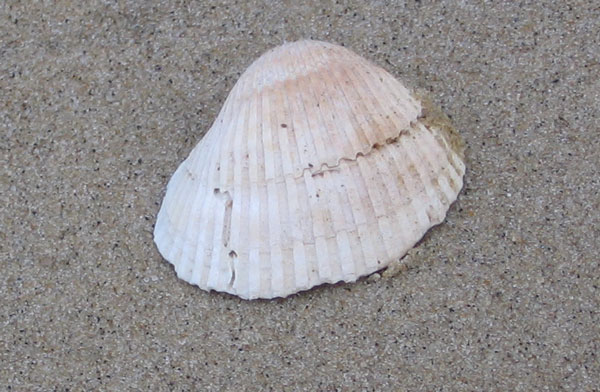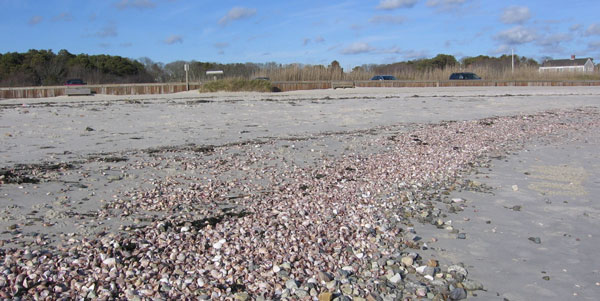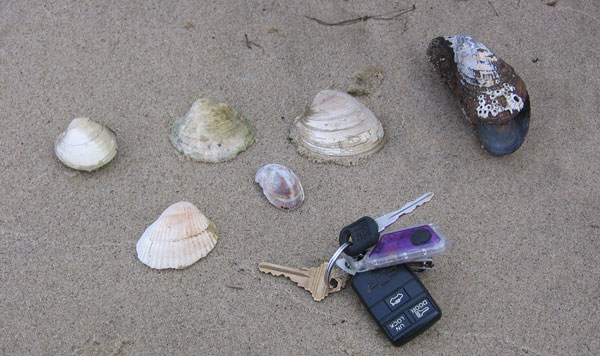Clams Ahoy!
Everything you always wanted to know about Clams but were afraid to ask!!
Cape Cod Clams by their Shells
Clams - The All Purpose Bivalve
The shore is home to many different types of shellfish. Only some of them are edible! Clams are not the only delicious thing you can take home from the sand, but some things look like clams that aren’t, and some shellfish you must not eat!
Here is a photo guide to common edible shellfish of Cape Cod and environs and their inedible (or nasty!) relatives.

Cockle. The cockle is not considered a clam on Cape Cod,
but it is edible. They are steamed, then eaten. Most people find the taste
disagreeable. It is something like licorice with added gasoline and dirt.
The Irish refer to cockles as “famine food,” meaning cockles are eaten only
when nothing else is left.

Ribbed mussel. Not a clam. Do not eat ribbed mussels. They are OK
for seagulls, but will make a person sick. Blue mussels have shells without
ribs, they’re known as moules in French, and are delicious. They were once
common on the East Coast of the US, are now rare. Scientists believe a
pathogen has killed most Atlantic blue mussels
 Cowrie:
Cowrie:
This carnivorous predator kills shellfish of all kinds. Its shells are distinctive for having a domed dorsal surface, and a ventral surface that extends only halfway to the shell’s edge. This species is an aggressive nuisance and its shells have replaced almost all others. When these shells are broken, their edges are razor-sharp like chunks of volcanic rock: watch your feet. Whether the oversupply of cowries is related to nitrogen seawater contamination is not known.

Too many cowries. Almost all the shells you see here are cowrie
shells. This is an ecosystem out-of-balance, but the cause is not easy to
identify. Overabundance and scarcity of shellfish can be a natural
phenomenon, changing by the year.
 Hard-shell clams: These are fine to eat!
Hard-shell clams: These are fine to eat!
From left to right: a littleneck, a cherrystone and a quahog.
These are all actually of the quahog clam species, graded by size, the littleneck the smallest, the cherrystone next, and the quahog the largest. Littlenecks and cherrystones are often served raw.

Relative sizes. Some good things come in small packages.
 Steamer clam: This is
one of the best clams to eat! The size is less
important, although legal-to-keep steamers
should be at least double the
size of the hole you make with you fingers showing “OK.” Best way to
identify a steamer: the soft shell. It’s so brittle, it’s easy to a steamer
clam shell yourself by accident. Dig with care! It’s best not to eat a
steamer with a broken shell.
Steamer clam: This is
one of the best clams to eat! The size is less
important, although legal-to-keep steamers
should be at least double the
size of the hole you make with you fingers showing “OK.” Best way to
identify a steamer: the soft shell. It’s so brittle, it’s easy to a steamer
clam shell yourself by accident. Dig with care! It’s best not to eat a
steamer with a broken shell.
 Hi,
we are Ted and John, just two guys who love Clams and other seafood.
Hi,
we are Ted and John, just two guys who love Clams and other seafood.